Top 7... Video game levels with hidden meanings
Appreciate it or not, symbolism is part of all forms of entertainment, and that includes video games. Sure, sometimes a chair is just a chair--but other times, the creators specifically shows that chair, with that lighting, and that character sitting in it in order to illustrate an overarching theme. Maybe you're a skeptic who thinks that people read into things way too much; perhaps you're more than willing to believe the authors have every intention of planting these subtle hidden messages. Either way, it's fascinating to think about the notion that things might mean more than they appear to.
Weaving in parallels, symbolism, and metaphors into a game certainly isn't easy, but when done right, it's like brain candy--a treat to for the mind to unwrap and digest. With the right knowledge--which usually includes the ending, so EXPECT MASSIVE SPOILERS AHEAD-- these seven levels all reveal deeper meanings, be they attributed to fans or explicitly stated by the game's creators. Whether you see these subtexts as ingeniously coded messages or just crackpot theories made by people desperate for a deeper meaning, there's no denying that they're fun to think about.
7. Max Payne 2's Address Unknown funhouse
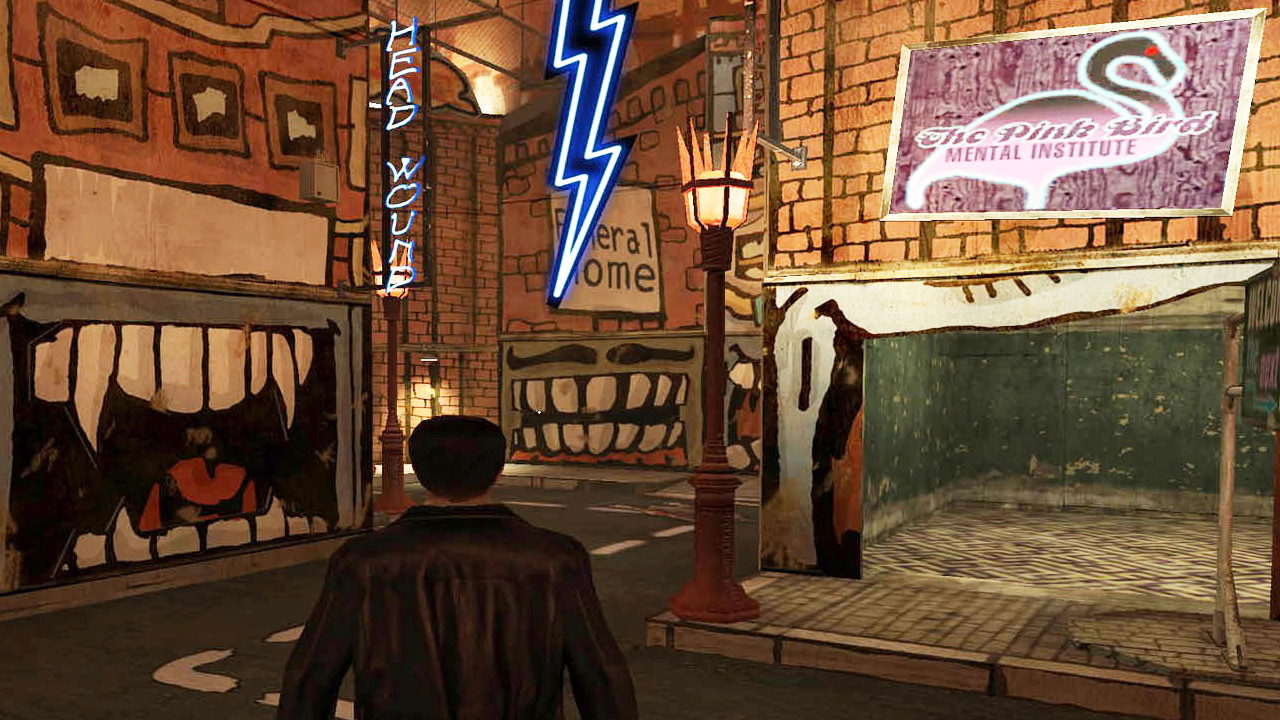
One of the most memorable, imaginative levels of the Max Payne series doesn't even contain any enemies to slow-motion shoot at. In Payne's universe, Address Unknown is a TV series from the '90s that revolves around a surreal murder mystery. It's basically Twin Peaks, except there's a talking pink flamingo that haunts the protagonist John instead of a strange-looking little person in a red room. Through little clips and overheard conversations, you can piece together the story of Address Unknown: John seeks out his girlfriend's killer, John Mirra, but gets institutionalized before he can track Mirra down. Eventually, John comes to the grim realization that he himself is Mirra (by gazing into a mirror), having killed his girlfriend during a psychotic episode.
Max Payne's cohort and love interest Mona Sax hides out in an abandoned Address Unknown-themed funhouse, which plays out like parallel to Max Payne's tragic plot. It's all there: an ascent up bloodied stairs to find your significant other dead; a demented trip through a grim hospital; the knowledge that Max's presence eventually leads to Mona's death, though in a much less direct way than John and his girlfriend. Payne even says it himself, reflecting on that disturbing feeling when "entertainment turns to a surreal reflection of your life."
6. Bastion's Jawson Bog
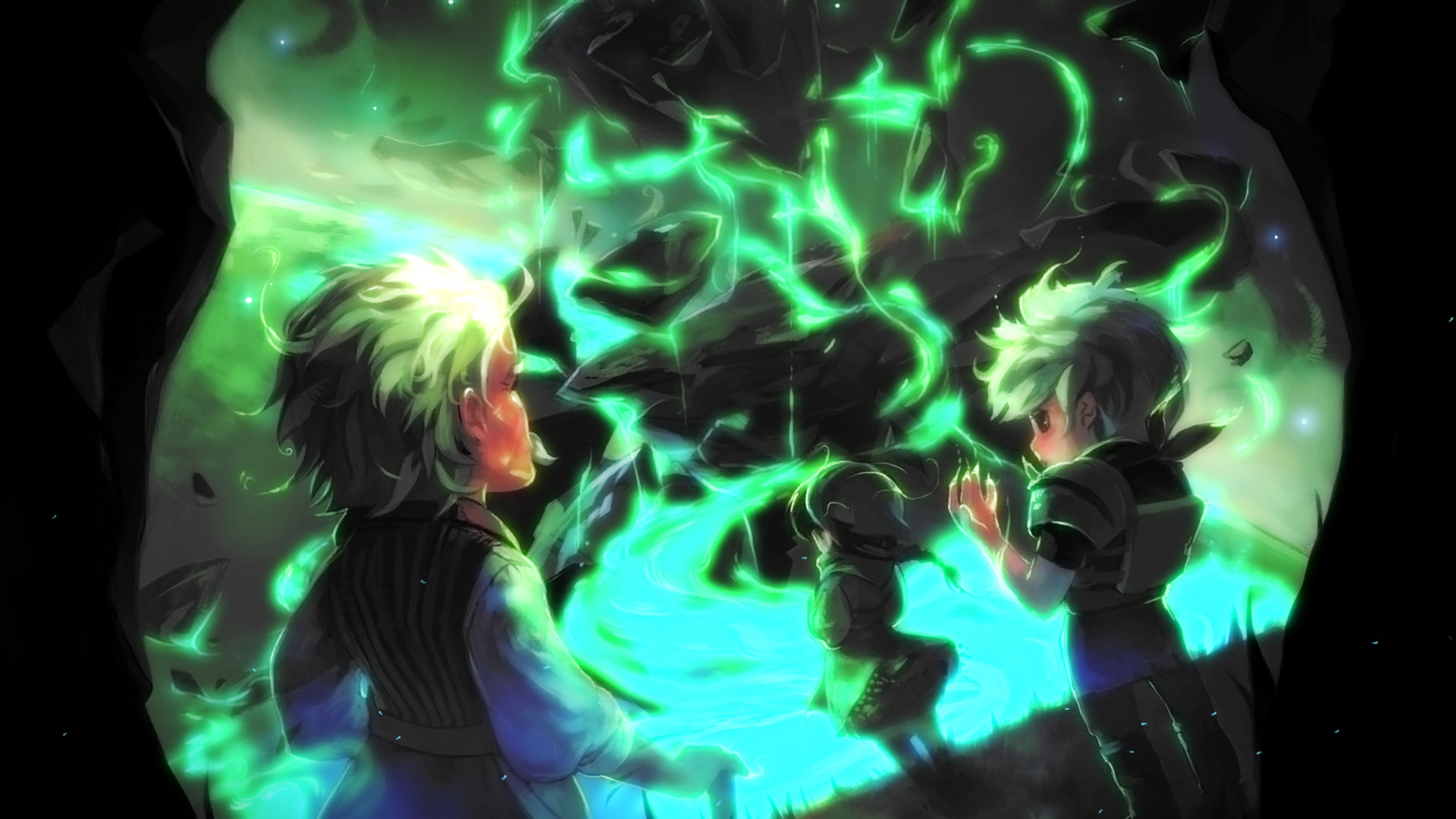
At the end of Bastion, you're given a choice: accept that the world-destroying Calamity happened and try to start a new life, or reverse time in an attempt to prevent the Calamity and essentially undo everything you just accomplished. Given that New Game+ opens with a line from the ending where you pull a big undo, it's implied that Bastion's events are experienced and reset in a continuous loop, meaning that the story can only end when you stop the cycle. That's what Rucks means with his opening line of narration: "Proper story's supposed to start at the beginning. Ain't so simple with this one."
If you choose to leave the fractured world as it is, you might miss this plot thread entirely--but one sequence in Jawson Bog actually alludes to the time loop long before you discover the Bastion's true purpose. When the Kid starts hallucinating after inhaling the noxious fumes of the Lungblossom plant, he relives the discovery of earlier zones, but in unfamiliar iterations. Events occur that didn't happen in your current playthrough, while Rucks' narration is erratic and strangely critical of the Kid's actions. The bad trip culminates in a fight with the Kid's shadowy doppelganger. These drug-induced visions may actually be memories of different outcomes from the repeating Calamity time-loop, which all happened before on account of the Kid's decision. He's not aware of his guilt, but his latent memories are trying to warn him not to restart the Calamity all over again.
5. Alice: Madness Returns' Dollmaker's Workshop
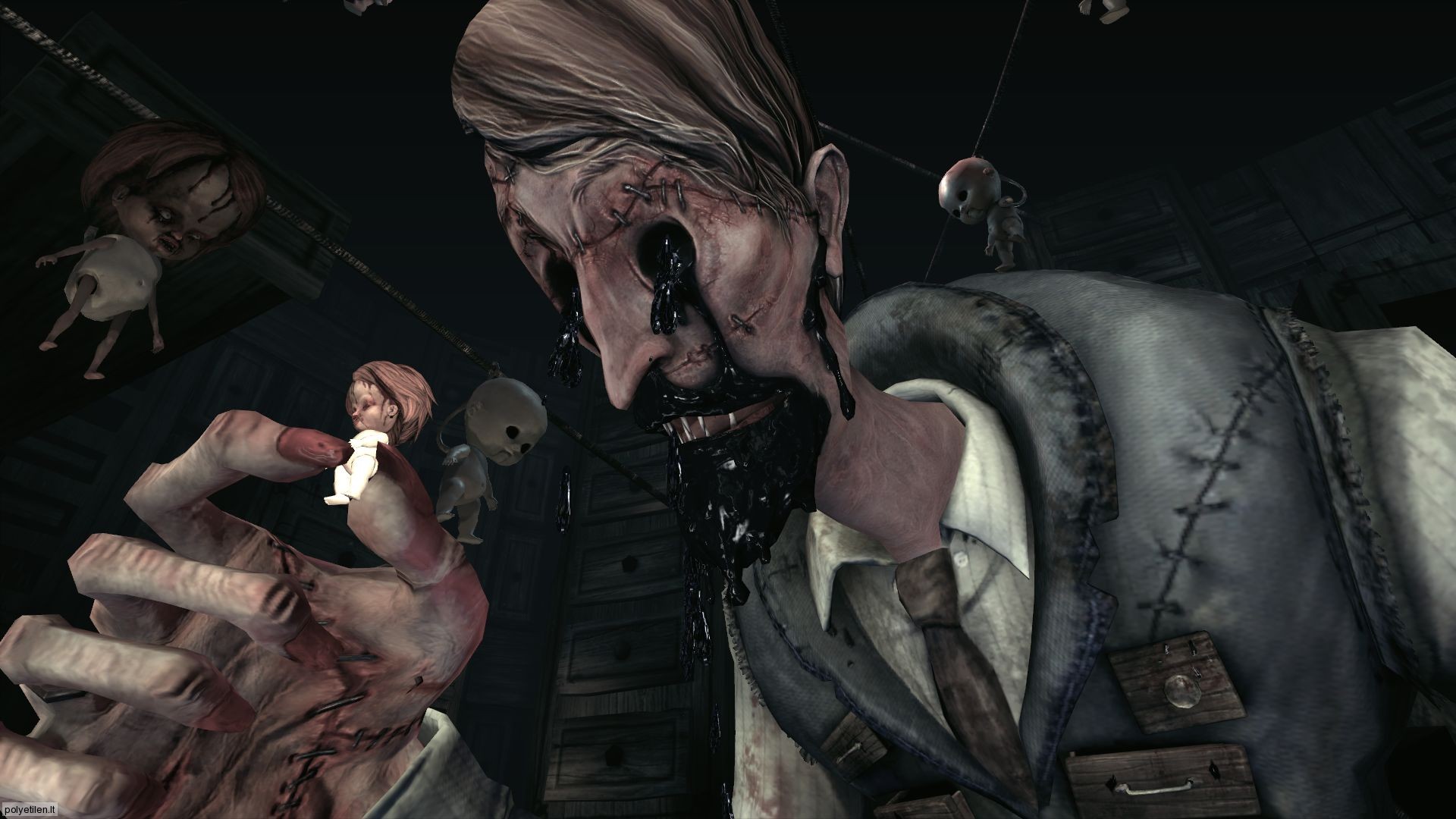
The deeper meaning behind this level is necessary to Madness Returns' plot, but you'll probably wish you didn't know the implications of Alice's demented fantasy. This stage is already one of the series creepiest, given that its a trip through a grimy, rust-colored factory that churns out cracked, disfigured, sometimes murderous porcelain dolls. But when boiled down to its horrifying essence, the Dollmaker's Workshop is basically all about child prostitution, which has to be a first for video games. American McGee, you are one brilliant and messed up dude.
Weekly digests, tales from the communities you love, and more
In Alice's waking life, she receives psychiatric treatment from Dr. Angus Bumby, who also runs the Houndsditch Home for Wayward Youth. His methods initially seem to help Alice, but her subconscious eventually unravels what's actually going on. The reality is that Bumby is brainwashing young orphans with hypnotherapy, then covertly peddling them as sex slaves on the London streets. This abominable situation manifests itself as the Workshop in Alice's mind, with a warped version of Bumby (with rivers of tar continuously oozing out of his eye sockets) as the controlling Dollmaker. Just like the Dollmaker manufactures hollow, damaged dolls, Bumby is producing mentally traumatized, doll-like children in the awful reality.
4. Braid's Level 1-1
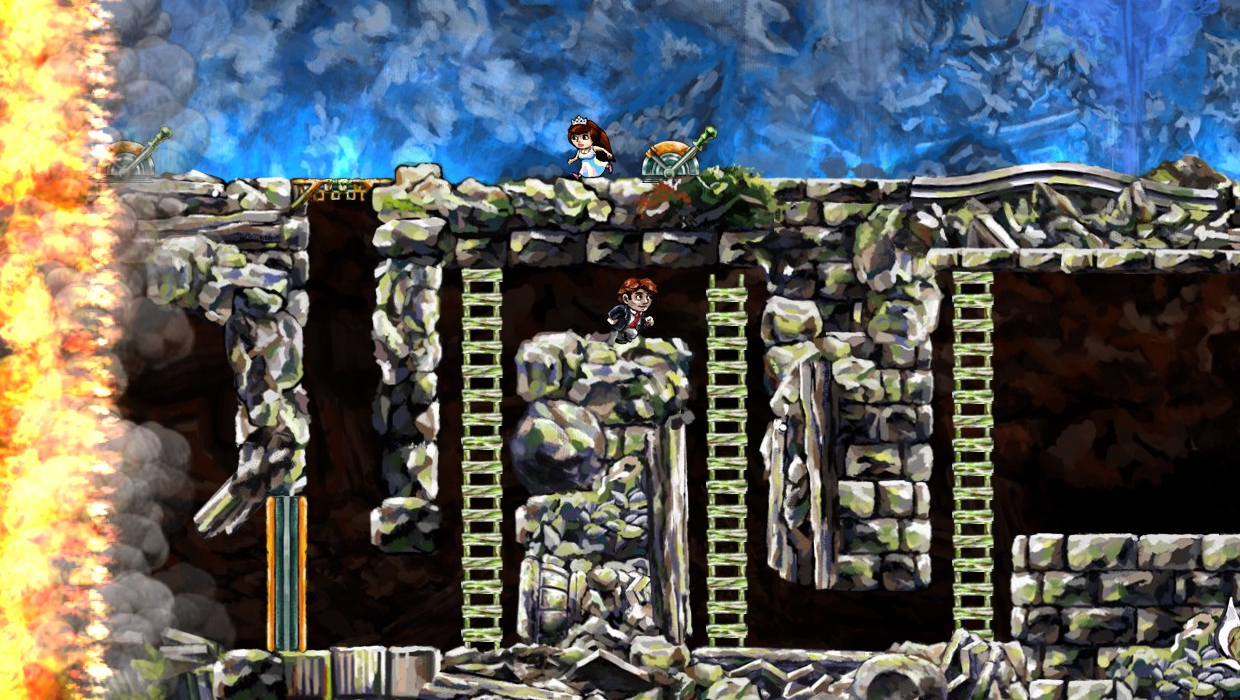
Anyone who's finished Braid will tell you that the finale is an absolute mind screw. There you are, thinking Tim is a hero on a (literally) timeless quest to save a Princess. But in the final level, you realize that A) the entire game plays out in reverse chronological order, and B) you're not the noble hero of this story; you're the villain. That's already a pretty crazy twist--but there's even more symbolism beyond the reveal that Tim is just a stalker obsessed with an unrequited love.
The books in the Epilogue room use actual quotes to drop hints about the Manhattan Project, the real-life research that eventually created the first atomic bomb. By collecting seven of the eight stars hidden throughout the previous levels, you can unlock two alternate endings that change the sequence of 1-1's revelatory events. One of them drives the atom bomb analogy straight home by giving you the option to actually reach the Princess--but just as you're about to make contact, the whine of a bomb fuse sounds and the entire level explodes in white light. In essence, Tim (and the scientists in the Manhattan Project) were striving towards completing a quest that ended up to be not so noble after all. Oh, and Braid's original August 6th release date is the same day that US dropped an atomic bomb on Hiroshima in 1945.
3. The Legend of Zelda: Skyward Sword's Ancient Cistern

It's not hard to decipher that the Ancient Cistern has thematic ties to Buddhism, given that the dungeon's main centerpiece is a giant golden Buddha-like statue. But what's less obvious is that almost every facet of this particular zone is directly correlated to the 1918 story of The Spider's Thread. As you guide Link through this zombie-filled dungeon, you're essentially re-enacting every crucial scene from this ancient Buddhist fable.
I'm no monk, but I'll try to summarize: while strolling through Paradise, Buddha comes across a lily pond which contains a passage to Hell. While peering into Hell between the lotuses, Buddha notices Kandata, a criminal whose only good deed was deciding not to crush a spider. To reward this moment of benevolence, Buddha offers Kandata a lifeline by lowering a strand of spider's silk into Hell. As Kandata climbs out of the Pool of Blood, other damned souls attempt to join him--and the moment Kandata selfishly tells them that the thread is solely for him, it snaps, and he plummets back into the abyss. Now that you know all that, here's an incredible in-depth analysis of how the Ancient Cistern embodies this parable in full, with the hellish, zombie-infested depths that Link can only escape by climbing up a single thread to the Paradise-like golden bliss of the upper level.
2. Catherine's nightmare stages
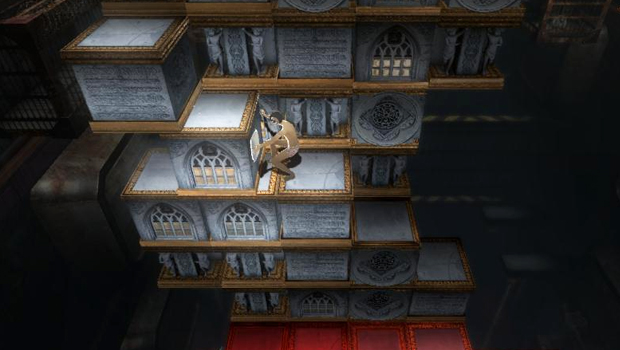
On the surface, there seems to be a giant disconnect between Catherine's plot and its puzzle-based gameplay. During the day, you're guiding Vincent through the thrills and chills of infidelity. He can't decide between settling down with his reserved girlfriend Katherine or enjoying a fling with the flirty temptress Catherine. But at night, you're trapped in a nightmare where everyone's a sheep and you're all climbing a gigantic tower of movable blocks. What's the connection? Pretty much everything, actually.
Project director Katsura Hashino gave GR's own Ryan Taljonick the inside scoop on what it all means. "The puzzle part is about struggle, of constantly having to come up with new ideas to find a way to the top," says Hashino. Vincent's desperate ascent up a slowly crumbling block puzzle represents heavy concepts like "stairs in life one must climb that are beyond our control" and "[wanting] to run away from pressure." And the symbolism doesn't stop there. "We combined the 'lost sheep' imagery found in the Bible with the concept of [counting sheep] to fall asleep...there are other Christian motifs too, such as the church-like [environments]; the confessional; angels and demons," explains art director Shigenori Soejima. Hashino brings it all home, saying "Just as there's no one correct way to climb the stairs in the nightmare sequences, there's no correct ending or answers in the relationships between people." Whether in the nightmare puzzles or Vincent's love life, it's all about the constant push and pull.
1. Psychonauts' Mental Worlds
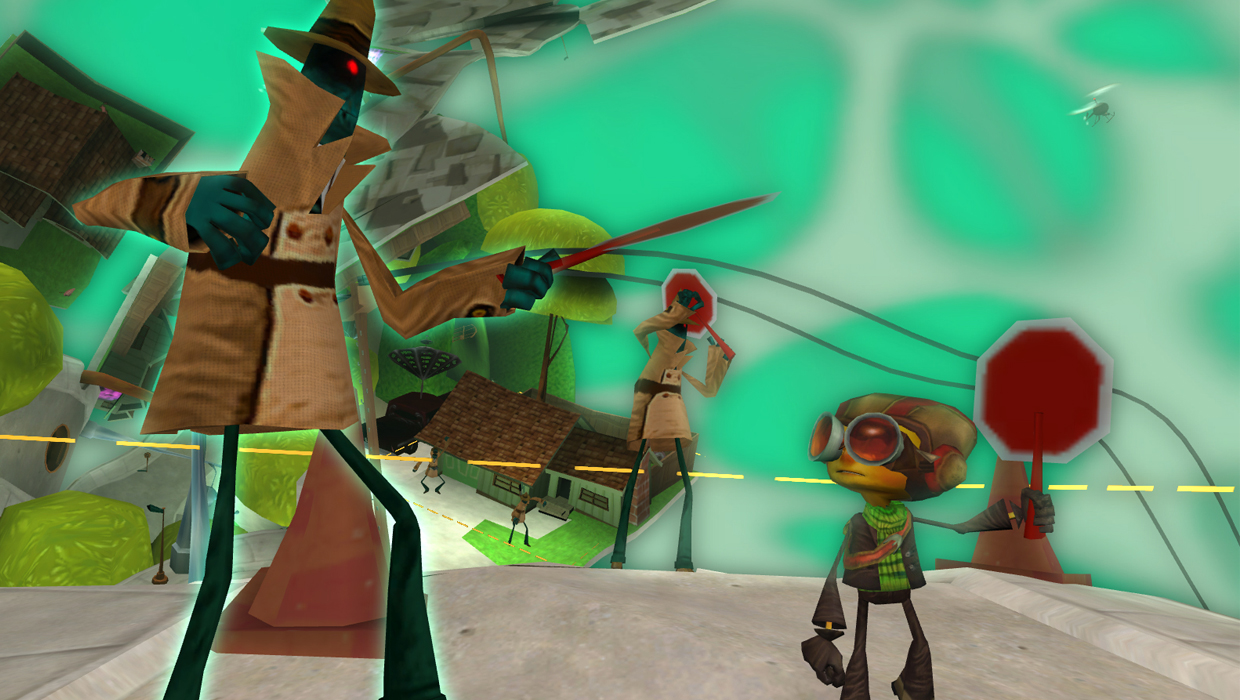
The genius of Psychonauts ties back to the symbolism--everything in every level means something. Raz's adversaries are all representations of a character's subconscious, such as the suit-and-tie-clad Censors that are constantly trying to stamp out strange and unfamiliar ideas (including Raz himself). The surroundings in the Mental Worlds reflect a state of mind, like how Linda the Lungfish envisions a peaceful city being torn apart by a giant oppressor (which is actually the telekinetic presence of the main villain). And the transformations Raz enables--like when Boyd Cooper overcomes his paranoia and reawakens his confident Milkman persona--all come back to the cast's psychological breakthroughs in the real world. It may not be the most subtle with all of its metaphors, but the pure volume of deeper meaning is astounding.
I could wax poetic about Psychonauts' imaginative mindscapes all day, but it's best if you just experience them for yourself. Every environment and enemy is an expression of that person's psyche; every facet of the level layout is an opportunity to learn more about a given character. The fact that you can glean personality traits simply by exploring each Mental World, is in my mind, an incredible achievement in game design and a testament to the ahead-of-its-time genius of Psychonauts.
Think about it
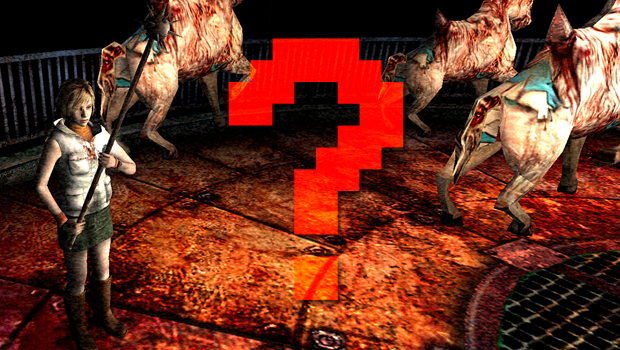
Crazy, right?! That's a lot of hidden meanings to mull over--but man are they fascinating to mentally wrestle with. Know of any other levels that exemplify good symbolism? Enlighten me and your fellow readers in the comments section below!
And if you're looking for more Top 7 goodness, check out Top 7 Most devastating groin shots in video games and Top 7 video game bosses you don't actually fight.
Lucas Sullivan is the former US Managing Editor of GamesRadar+. Lucas spent seven years working for GR, starting as an Associate Editor in 2012 before climbing the ranks. He left us in 2019 to pursue a career path on the other side of the fence, joining 2K Games as a Global Content Manager. Lucas doesn't get to write about games like Borderlands and Mafia anymore, but he does get to help make and market them.



